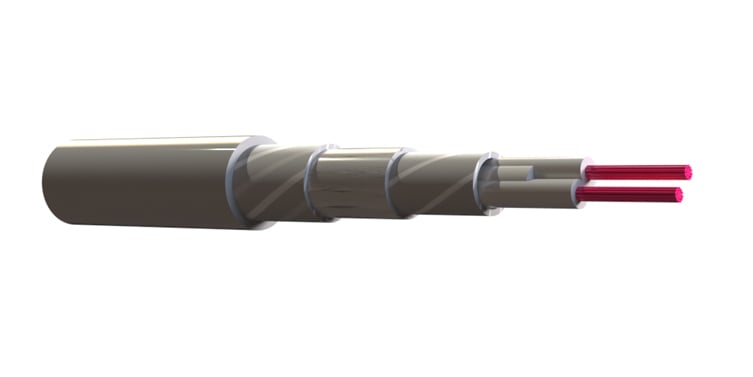Custom cables & harnesses
At Habia we specialise in the design and manufacture of customised cables and harnesses for extreme environments and demanding applications.
A conductor is the core component that allows the flow of electrical current in one or more directions. A metal wire is a common electrical conductor.

In national and international standards, the conductor type and size are specified. In other cases, the intended use of the cable is the key reason for selecting one type of conductor over another. Whilst the applications are as varied as the custom design cables made to meet them, some examples include:
There is a wide range of metals that can be used as a conductor, although Copper (Cu) is by far the most common due to its relative low cost and availability. Other common options like aluminium, steel or tinsel wire (mixed strands of copper and cotton) may offer advantages in strength, weight or flex-life. However, they almost always come at the cost of reduced conductivity.
Plated copper, such as Tin Plated Copper (TPC), Silver Plated Copper (SPC) and Nickel Plated Copper (NPC) offer additional features, for example elevated temperatures and improved conductivity or solderability.
Purer conductors, copper plated with Oxygen Free High Conductivity (OFHC), improves the signal performance and are often used for audience frequencies. High Strength Copper Alloy (HSA) conductors provides a much improved dynamic performance over standard copper conductors.
A variety of other metals and alloys are used for their unique conducting properties when exposed to heat. Commonly known as Resistance Wires, they are used in Thermocouple cables where combinations of resistance wires can be used to detect variations in temperature. Some of the most commonly are Nickel- Chromium (NiCr), Copper-Nickel (CuNi) and Iron (Fe).
The simplest form of conductor is a single, solid metal wire, so called strand. Although this offers the smallest diameter, the purest signal and the largest cross-sectional area, this is also mechanically the weakest option and solid conductors are prone to breaking after just a few bending cycles. To improve the durability and flexibility of a conductor it is common to strand multiple metal wires together, the more wires that are stranded together to make a given size, the more flexible the conductor will be.
At Habia, we specialise in designing and manufacturing custom cables and harnesses for demanding applications. With access to a wide range of metals and materials, our experienced designers can advise on the ideal conductor for your specific application.